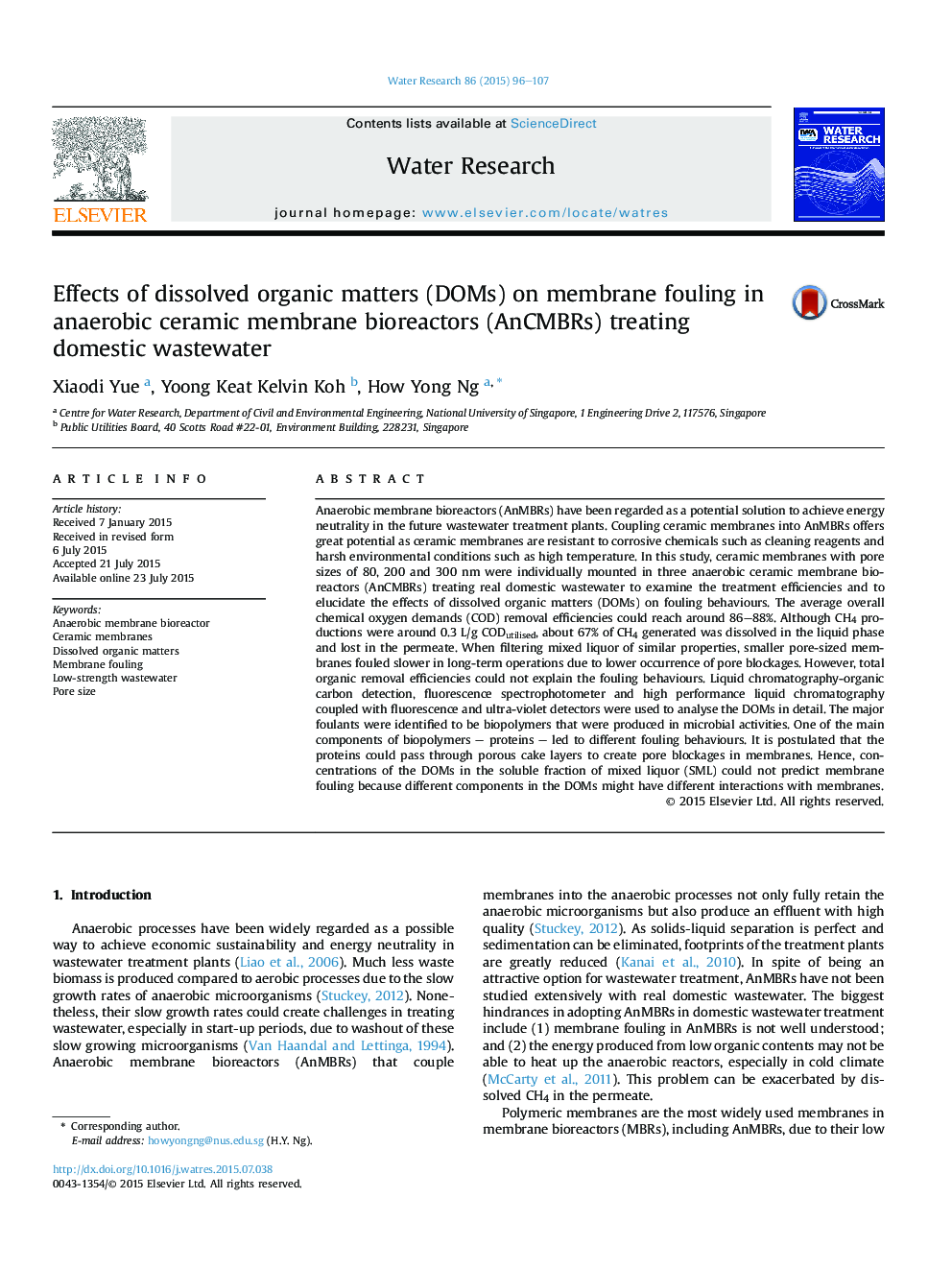| کد مقاله | کد نشریه | سال انتشار | مقاله انگلیسی | نسخه تمام متن |
|---|---|---|---|---|
| 6365644 | 1623082 | 2015 | 12 صفحه PDF | دانلود رایگان |

- Three AnCMBRs mounted with 80, 200 and 300Â nm ceramic membranes were deployed.
- The effects of DOMs on membrane fouling were studied with real domestic wastewater.
- Membrane fouling rates formed a trend of R80Â <Â R200Â <Â R300.
- DOMs concentrations and removal efficiencies by membranes could not explain fouling.
- Fouling governed by biopolymers, particularly proteins that caused pore blockages.
Anaerobic membrane bioreactors (AnMBRs) have been regarded as a potential solution to achieve energy neutrality in the future wastewater treatment plants. Coupling ceramic membranes into AnMBRs offers great potential as ceramic membranes are resistant to corrosive chemicals such as cleaning reagents and harsh environmental conditions such as high temperature. In this study, ceramic membranes with pore sizes of 80, 200 and 300Â nm were individually mounted in three anaerobic ceramic membrane bioreactors (AnCMBRs) treating real domestic wastewater to examine the treatment efficiencies and to elucidate the effects of dissolved organic matters (DOMs) on fouling behaviours. The average overall chemical oxygen demands (COD) removal efficiencies could reach around 86-88%. Although CH4 productions were around 0.3Â L/g CODutilised, about 67% of CH4 generated was dissolved in the liquid phase and lost in the permeate. When filtering mixed liquor of similar properties, smaller pore-sized membranes fouled slower in long-term operations due to lower occurrence of pore blockages. However, total organic removal efficiencies could not explain the fouling behaviours. Liquid chromatography-organic carbon detection, fluorescence spectrophotometer and high performance liquid chromatography coupled with fluorescence and ultra-violet detectors were used to analyse the DOMs in detail. The major foulants were identified to be biopolymers that were produced in microbial activities. One of the main components of biopolymers - proteins - led to different fouling behaviours. It is postulated that the proteins could pass through porous cake layers to create pore blockages in membranes. Hence, concentrations of the DOMs in the soluble fraction of mixed liquor (SML) could not predict membrane fouling because different components in the DOMs might have different interactions with membranes.
Journal: Water Research - Volume 86, 1 December 2015, Pages 96-107